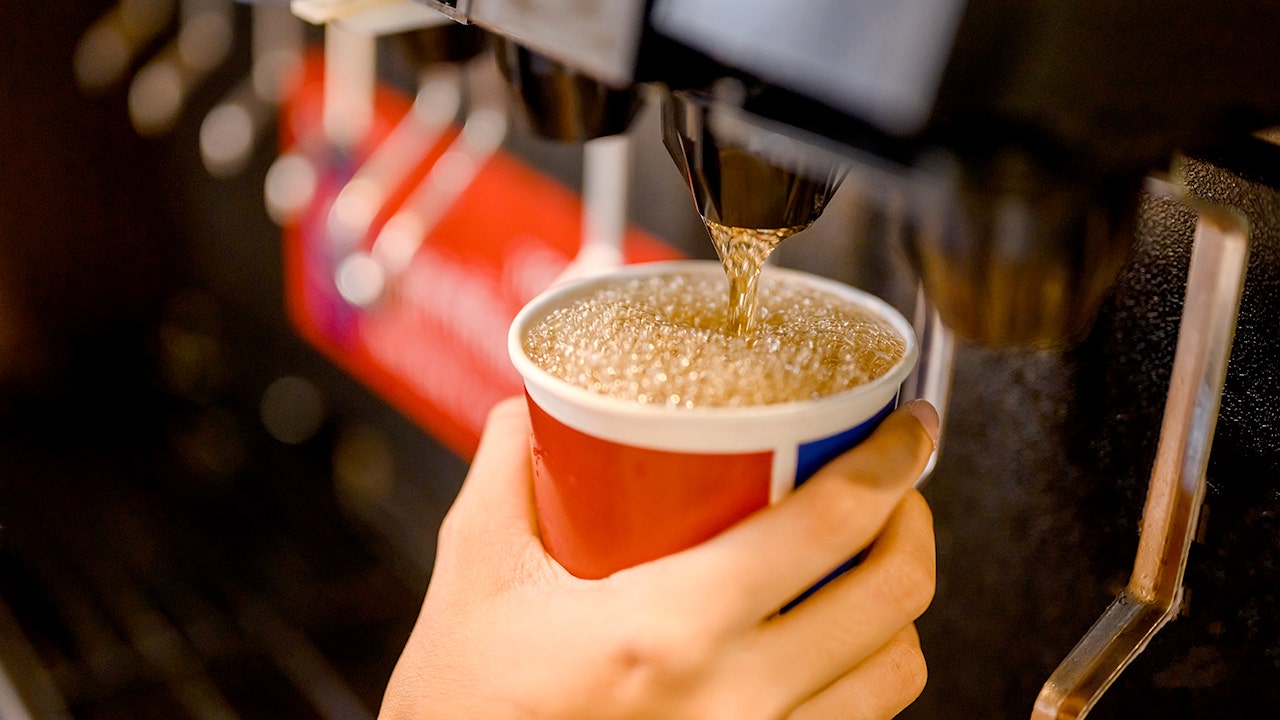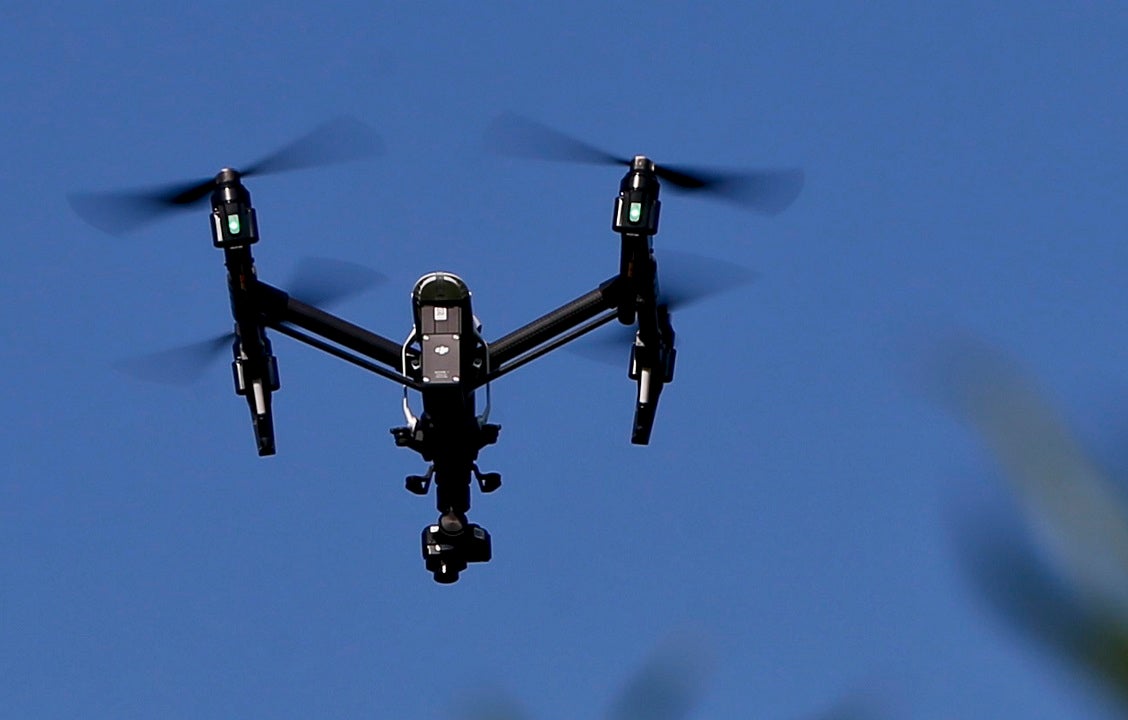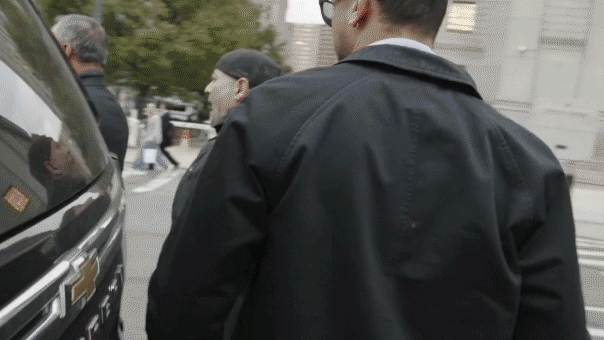Sports
How Roki Sasaki’s transformation from injured starter to closer saved the Dodgers’ season

Thirty-one days ago, Roki Sasaki arrived at Dodger Stadium, met with president of baseball operations Andrew Friedman and general manager Brandon Gomes, and was presented a plan that required faith and trust.
It had been eight months since Sasaki signed with the Dodgers amid massive expectations, coming over from Japan as a 23-year-old phenom billed as possessing some of the best raw arm talent in the world.
It had been four months since his debut season took a dismal turn, landing on the injured list with a shoulder impingement following an opening month marred by poor performance and diminished stuff.
Less than two weeks earlier, Dodgers manager Dave Roberts had all but written Sasaki off as a potential factor in the team’s postseason plans, after the pitcher had continued to struggle in a minor-league rehab stint.
But then, two days before his meeting with club brass, Sasaki had finally shown some signs of life, striking out eight batters during an auspicious start with triple-A Oklahoma City in which his fastball once again touched 100 mph and his trademark splitter was almost unhittable.
So, as the team began looking ahead to October, Friedman and Gomes sat Sasaki down alongside his interpreter, and presented what has proven to be a season-altering idea — for him, and his new team.
The Dodgers knew Sasaki was unlikely to feature as a starting pitcher in October, given their healthy and dominant rotation. But they saw an opportunity to use him as a reliever in the playoffs.
Only, however, if he were also open to it.
“We were just honest with him, that as things stood, the only real pathway — short of multiple injuries — was in the bullpen,” Friedman said. “But we wanted his full buy-in.”
Long-term, they promised him, he would still be a starter. In their view, he was assured, the team still saw him as a potential future ace.
But for now, they asked if he’d be open to making a temporary move to the bullpen; to taking on a relief role that they knew to him was completely foreign.
“We don’t want an answer right now,” Friedman told Sasaki. “We want you to take time and think through it.”
“We would not want to push this,” he added, “unless you’re totally on board.”
All year, the Dodgers had tried to build trust with their newest Japanese star. Now, they waited for an answer, as Sasaki went home and mulled things over alongside his agent.
As he later told the Japanese magazine Shukan Bunshun, he was initially “very hesitant” to such a switch. There was a time in middle school he’d been a closer, but during his ascent from high school to the pros, starting was all he’d ever known.
Several things, however, tipped the scales in his mind. He craved a chance to pitch in a postseason environment. He sensed an opportunity to boost a team in desperate need of relief depth. And, having finally found a comfort level with his club after a trying rookie season, he’d regained the confidence he was missing at the start of the campaign.
Thus, before the end of that day on Sept. 11, Sasaki gave the Dodgers his answer. He was in.
“Because they will let me try to start again next season,” he said, “it was a relatively easy decision to make.”
Thirty-one days — and 5 ⅓ scoreless, invaluable innings of postseason relief work from Sasaki — later, it was a moment that might have helped save the Dodgers season, and launch the rest of his MLB career.
From the day Sasaki signed with the Dodgers in January, his agent, Joel Wolfe of Wasserman Media Group, was quick to remind reporters that his young client was “not a finished product by any stretch.”
Turned out, he didn’t come to the majors completely healthy either.
During his final couple seasons in Japan, Sasaki’s fastball velocity had dipped while battling shoulder and oblique injuries. He couldn’t explode down the mound with his high leg kick the way he once did. He wasn’t consistently hitting 100 mph on the radar gun or dotting the strike zone with his typically pristine command.
His delivery, evaluators noticed, had begun to suffer. A throw built on generating torque from his legs to his hips and on through his shoulder and lengthy right arm, instead started to look inefficient and uncomfortable.
“I think a lot of it just came from his body changing the way he was throwing,” said Dodgers director of pitching Rob Hill, who had closely admired Sasaki during his Japanese career. “Due to kind of throwing hurt for probably a couple years.”
Once he joined the Dodgers this year, Sasaki hit rock bottom. His oblique no longer bothered him. But his shoulder remained sore and stiff. His fastball eclipsed triple-digits a couple times in his adrenaline-fueled MLB debut in Tokyo in March, but quickly plummeted upon returning stateside, averaging just 95.7 mph (and dipping all the way to 93 mph and below) over his seven subsequent starts.
When coupled with erratic control (he walked 22 batters in 34 ⅓ innings), and a flat pitch shape that made his four-seamer relatively easy to hit (lacking the vertical “ride” required to fool MLB batters long accustomed to combating big velo), opponents began teeing off. By the time Sasaki finally went on the injured list with a shoulder impingement in early May, he had a 4.72 ERA and some of the worst underlying metrics in the majors.
“We go back to the drawing board every week with him,” pitching coach Mark Prior said at the time. “We’re just trying to support him with everything we can.”
Roki Sasaki, above pitching during Game 1 of the NLDS in Philadelphia, is the first pitcher in MLB history to have his first two career saves come in the playoffs.
(Robert Gauthier / Los Angeles Times)
At first, Sasaki seemed slow to embrace it. Not only was there a language barrier between him and his new club, but the rookie also built walls around his personality. Quiet by nature and “very particular” in temperament, as Wolfe described him this winter, Sasaki tried to keep a steadfast routine. He didn’t want to alter his pitch mix. He searched for his own ways to iron out his mechanics.
But all he found instead was frustration, leaving him looking lost in his new surroundings — and sinking even lower when lingering shoulder pain in early June further delayed his recovery timeline and required a cortisone injection.
“I think like any new player that you acquire, it takes a little while to build up trust,” Friedman said. “We knew that he was a guy that was accustomed to doing things a certain way, and we were going to embrace that, [while] at the same time forging a relationship and building trust and getting to a place where we could partner together.”
It would take time for the two sides to get there.
As Sasaki tells it, the turning point in his season happened three days before that meeting with Friedman and Gomes; on the eve of the rehab start that triggered their suggestion to move to the bullpen.
Sitting in his Oklahoma City hotel room that night, Sasaki pulled up old video of his high school days and studied a delivery that, even then, enthralled evaluators around the sport.
He was looking to the past to find answers in the present.
“I felt,” he later recounted to Shukan Bunshun, “like I was about to notice something.”
So, he kept watching.
In the three months before then, Sasaki and the Dodgers had finally started making progress.
After his initial injury setback, he formed a connection with head team physician Dr. Neal ElAttrache — the renowned orthopedic surgeon who not only laid out a plan for Sasaki’s recovery, but more important allayed fears of continued problems through what Sasaki described as a “very educational” process.
As Sasaki’s shoulder calmed down, he took strides in the weight room as well, working with Dodgers strength coach Travis Smith to add explosiveness and strength (especially in his lower body) to his once-scrawny 6-foot-2 frame.
“I feel better about being able to throw harder,” Sasaki said in August, as he headed out on a long-awaited rehab assignment, “especially because I’m completely pain free.”
Sasaki’s first four starts in triple-A were still a mixed bag. His velocity gradually improved, but remained mostly struck in the mid-90s. He tinkered with new pitches, including a cutter and sinker, but still couldn’t execute his trademark splitter the way he wanted.
By early September, it was enough for Roberts to cast doubt on Sasaki’s return, saying bluntly that “the performance, the stuff hasn’t been there.”
“Roki has gone through a lot this year, and he still has a ton of talent,” Roberts added. “We just want to see more.”
One week later, they finally would.
During a trip to the team’s Arizona training complex in the following days, Sasaki met with Hill and his pitching development staff, spending several hours reviewing video of his throw.
As Hill described it last month, they weren’t so much “solving this master plan” with Sasaki as they were “helping him actualize the things” he was trying to do in his delivery. They suggested tweaks to Sasaki’s lower-half mechanics. They emphasized the way he fired his hips as he launched down the mound.
Sasaki listened, and agreed on what they identified as the root causes of his struggles. One day that week, he even tested some of the changes in what was one of his hardest bullpen sessions all year.
“The day of that bullpen, it was like, ‘Holy s—,’” Friedman recalled thinking. “Things are in a really good spot.”
Sasaki, however, hadn’t convinced himself of that yet. While Hill’s evaluation “matched up with what I thought wasn’t going well,” he said in Japanese last week, “the approach [to fixing it] was a different story.”
That’s why, when Sasaki returned to Oklahoma for his next start days later, he went back over more video, and waited for a revelation.
It was then, he said, “I noticed something about the use of my lower body.”
Like a high jumper with a disjointed sequence while lifting off the ground, Sasaki felt he was still losing too much power between his leg kick and release — drawing a contrast to what he saw in his old high school motion.

Dodgers first baseman Freddie Freeman gives the ball to pitcher Roki Sasaki after he closed out the ninth inning to preserve the win against the Philadelphia Phillies in Game 2 of the NLDS.
(Robert Gauthier / Los Angeles Times)
So, for the rest of that night, he did dry throws in his room in search of a specific feel. All those months of work with the Dodgers’ medical team, training staff and pitching coaches suddenly tied together. For the first time all year, he felt like his old self again.
The next evening, he took the mound and hit 100 mph six times. He coupled it with extra life and movement on his knuckle-balling splitter. And he showed enough for Dodgers brass to call him back to Dodger Stadium and inquire about the bullpen.
“We think you can be really good in this role,” Friedman told him. “This is the potential pathway to help us in October.”
Of course, no one saw the level of dominance that was on the horizon. After completing his minor-league stint with two scoreless relief appearances, Sasaki rejoined the Dodgers for the final week of the regular season, showcased his improved stuff with two more scoreless innings of relief, then made a rapid ascent to de facto postseason closer — producing zero after zero when other relievers faltered around him.
He recorded the final outs of the team’s wild-card round sweep of the Cincinnati Reds. He picked up back-to-back saves in Games 1 and 2 of the National League Division Series against the Philadelphia Phillies, becoming the first pitcher to record his first two career saves in the playoffs. He spun three perfect innings in the club’s Game 4 clincher on Thursday.
“One of the great all-time appearances out of the ‘pen that I can remember,” Roberts called it.
“Since coming back, coming in from the bullpen,” added teammate Tyler Glasnow, “he’s honestly one of the best pitchers I’ve ever seen.”
It has all come with a renewed level of confidence too. After that Game 4 masterclass (in which he was so locked in he didn’t even remove his glove in the dugout between innings), Sasaki said he has felt no nerves in the playoffs, nor any hesitancy about attacking the strike zone.
All those frustrations from early in the season have evaporated. His process of building trust within the organization while rediscovering the best version of himself on the mound has come suddenly, electrifyingly complete.
“The stuff being there lines up with what our expectations were,” Friedman said. “But the poise and composure, you don’t know until someone’s out there. And I would say he has more than answered the bell.”


Sports
Penn State drops third consecutive game, grapples with star player Drew Allar’s season-ending injury
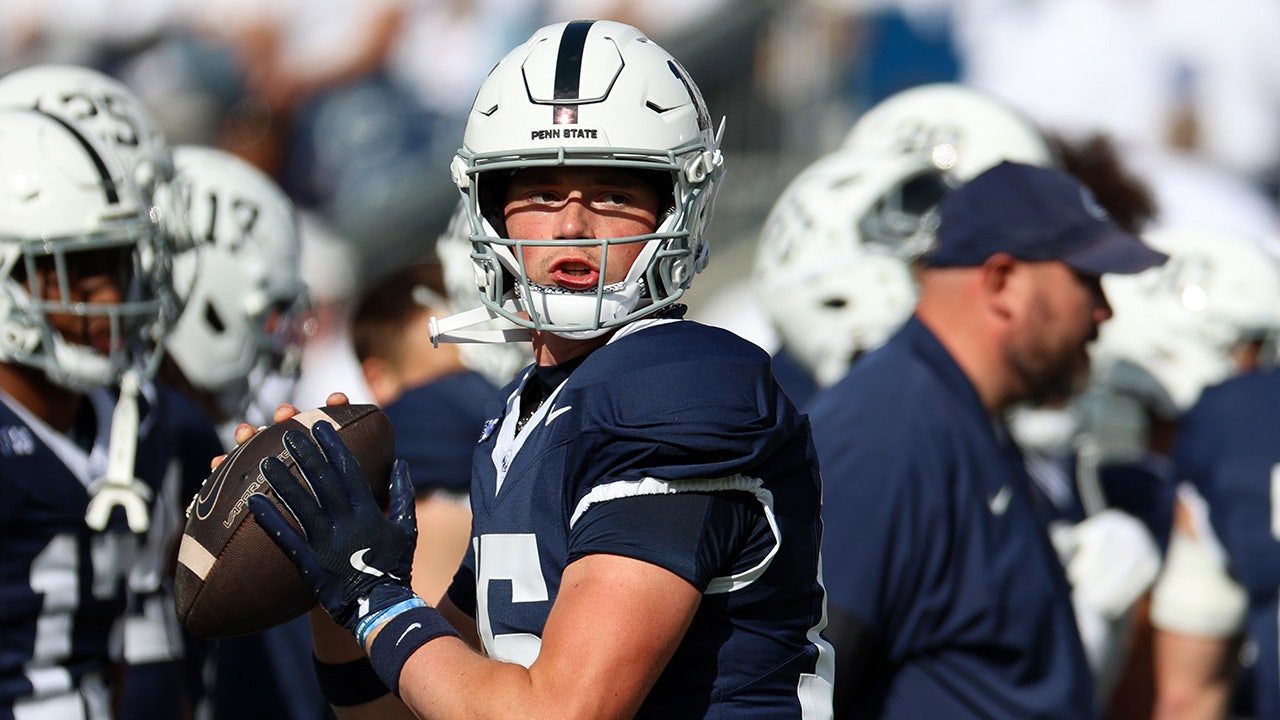
NEWYou can now listen to Fox News articles!
Penn State returned to State College, Pennsylvania, looking to bounce back from last week’s upset loss against the UCLA Bruins. But the Northwestern Wildcats had other plans on Saturday.
Wildcats running back Caleb Komolafe sprinted for 72 yards and scored a touchdown in the fourth quarter to help lift Northwestern to a 22-21 win at Beaver Stadium. The narrow victory secured Northwestern’s third consecutive victory, while Penn State dropped its third straight.
“I truly believe that our football team expected to win today,” Northwestern coach David Braun said. “Ultimately, the message was you’ve got a football team that’s got their back up against the wall, but also a football team that may be questioning who they are.”
Northwestern quarterback Preston Stone, left, celebrates his team’s win over Penn State on Saturday in State College, Pa. (AP Photo/Barry Reeger)
The Wildcats ended their 11-year windless drought at Beaver Stadium.
Penn State got the ball back with just under five minutes remaining following Komolafe’s touchdown, but quarterback Drew Allar suffered an apparent leg injury on a third-down play.
After the game, Penn State coach James Franklin confirmed Allar would miss the remainder of the season with an unspecified injury. Backup Ethan Grunkemeyer replaced him, was stopped on a fourth-down run, and the Wildcats ran out the clock.
QB TY SIMPSON SHINES, ALABAMA OUTLASTS MISSOURI IN 3RD STRAIGHT RANKED SEC WIN
Backup Ethan Grunkemeyer replaced him and was immediately stopped on a fourth-down run and the Wildcats ran the clock out from there.
Allar finished 13 for 20 for 137 yards passing and added 25 yards rushing and a touchdown. Allar returned for his senior season to make better of the season-ending interception he threw in last season’s College Football Playoff semifinal against Notre Dame.

Penn State quarterback Drew Allar sits up on the field during an injury timeout Saturday at Beaver Stadium. (Isaiah Vazquez/Getty Images)
The Nittany Lions committed six penalties for 71 yards in the first half.
Franklin took responsibility for Penn State’s recent struggles. “I take full responsibility for all of it,” Franklin said. “I hired all the staff, I recruited all the players. I believe in all of them. But we’re not getting it done right now.”

Penn State Nittany Lions head coach James Franklin stands on the field following the game against the Northwestern Wildcats at Beaver Stadium on Saturday in State College, Pa. (Matthew O’Haren/Imagn Images)
Iowa will host Penn State next week, and Grunkemeyer is expected to start at quarterback for the Nittany Lions.
The Associated Press contributed to this report.
Follow Fox News Digital’s sports coverage on X, and subscribe to the Fox News Sports Huddle newsletter.
Sports
Tiger Woods undergoes surgery after suffering serious back injury
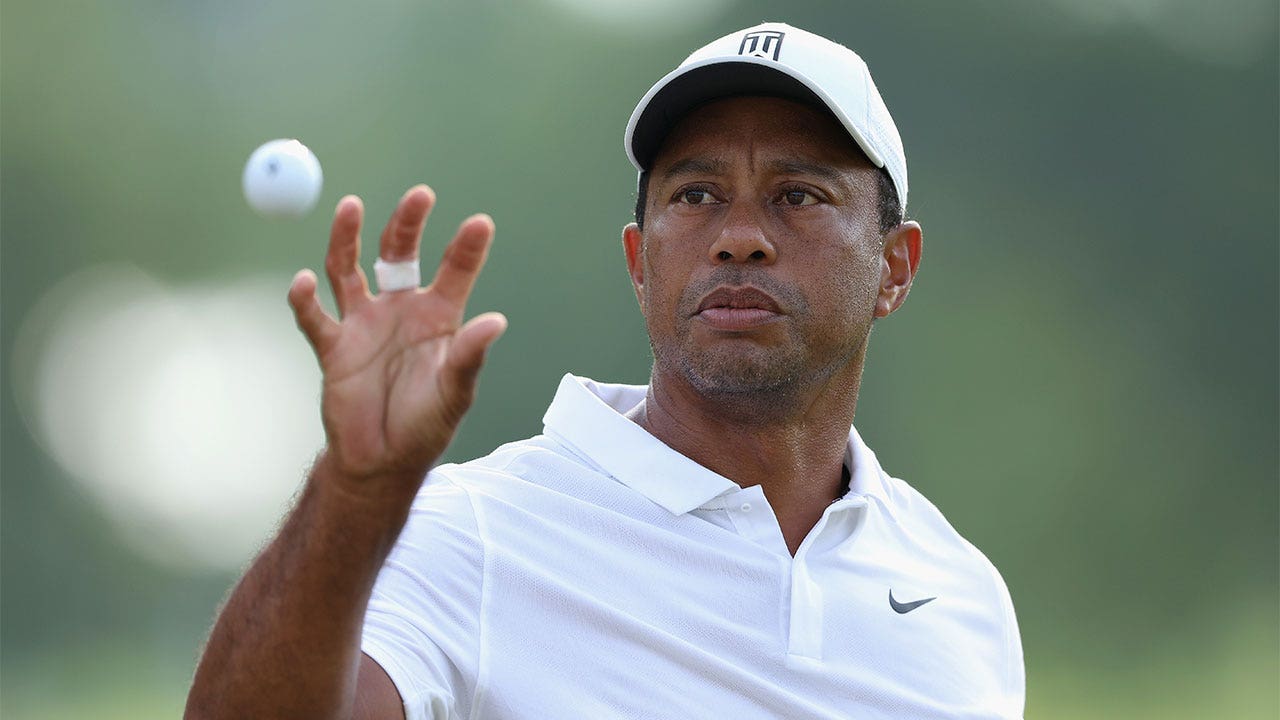
NEWYou can now listen to Fox News articles!
Tiger Woods has undergone surgery after suffering another major injury.
Woods, 49, announced Saturday that he recently underwent lumbar disk replacement surgery for a collapsed disc and a compromised spinal canal.
“After experiencing pain and lack of mobility in my back, I consulted with doctors and surgeons to have tests taken. The scans determined that I had a collapsed disc in L4/5, disc fragments and a compromised spinal canal,” Woods said in a statement.
Tiger Woods of Jupiter Links Golf Club waves to fans as he is introduced at the start of a match of the TMRW Golf League (TGL) against Boston Common Golf, Monday, Jan. 27, 2025, in Palm Beach Gardens, Fla. (AP Photo/Rebecca Blackwell)
“I opted to have my disc replaced yesterday, and I already know I made a good decision for my health and my back.”
For Woods, it is just the latest health setback in what has been a series of devastating injuries and subsequent procedures in recent years.
Woods underwent an operation to fix a nerve impingement in his lower back in September, and he’s already been sidelined from the PGA Tour this year while recovering from a ruptured Achilles tendon he suffered in March.
Woods infamously suffered multiple leg injuries when he was involved in a single-vehicle rollover crash in the Los Angeles area on Feb. 23, 2021.
PGA GOLFER JUSTIN THOMAS DISCUSSES RECENT ‘UPS AND DOWNS’ AS GOLF SEASON’S EXCITING HOMESTRETCH APPROACHES
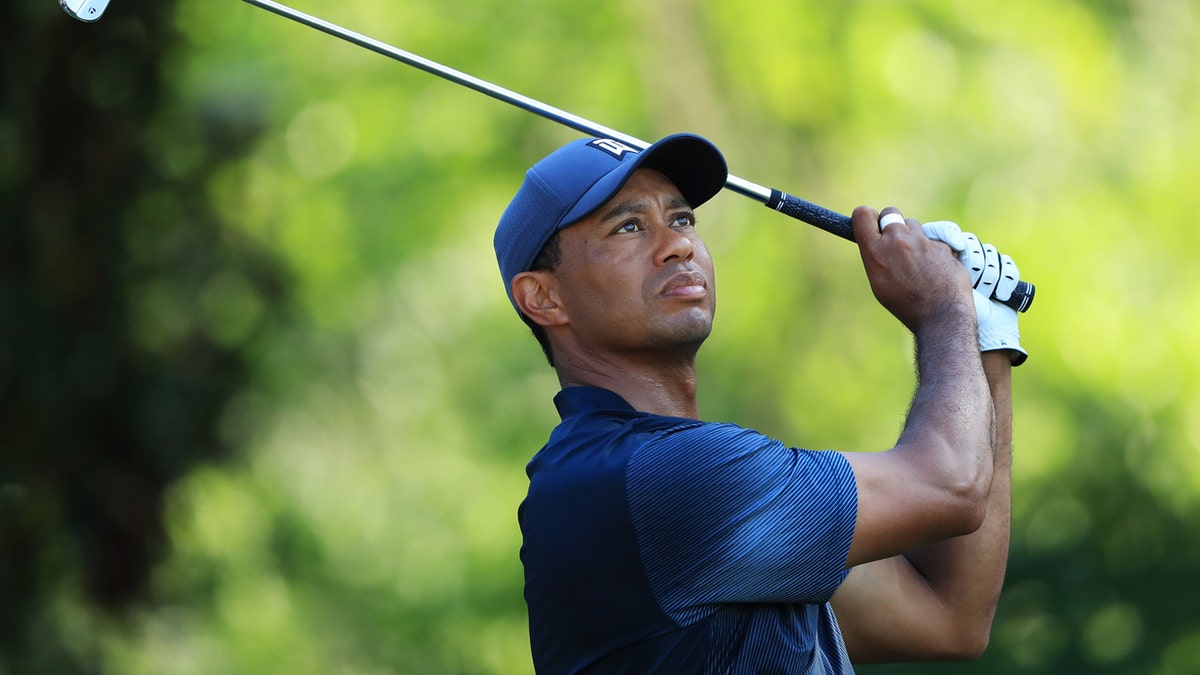
Tiger Woods of the United States plays his shot from the 13th tee during the second round of THE PLAYERS Championship on the Stadium Course at TPC Sawgrass on May 11, 2018 in Ponte Vedra Beach, Florida. (Sam Greenwood/Getty Images)
Since finishing tied for ninth at the 2020 Farmers Insurance Open, his best finish in his subsequent 18 official events has been tying for 37th at the 2020 PGA Championship.
Last year, he competed in just five events, one of them being the Genesis Invitational, the other four majors. He withdrew from the Genesis, finished dead last in the Masters and missed the cut in the final three majors.
That came after he competed in only the Genesis and Masters in 2023, where he finished tied in 45th and withdrew, respectively. In 2022, he played in the Masters (47th), the PGA Championship (withdrew) and the Open Championship (missed cut).
Just when it appeared Woods was turning the clock back, it seemed like all false hope. In 2018, he finished second in the FedEx Cup standings. In 2019, he won the Masters.
Since then, it’s been a tough stretch for Woods, who, in 14 majors since winning the green jacket in 2019, has failed to muster a top 20 finish. It’s his longest such streak since failing to finish in the top 20 in the first six majors of his career in 1995 and 1996. In his last 26 majors, he has only four top 20 finishes.
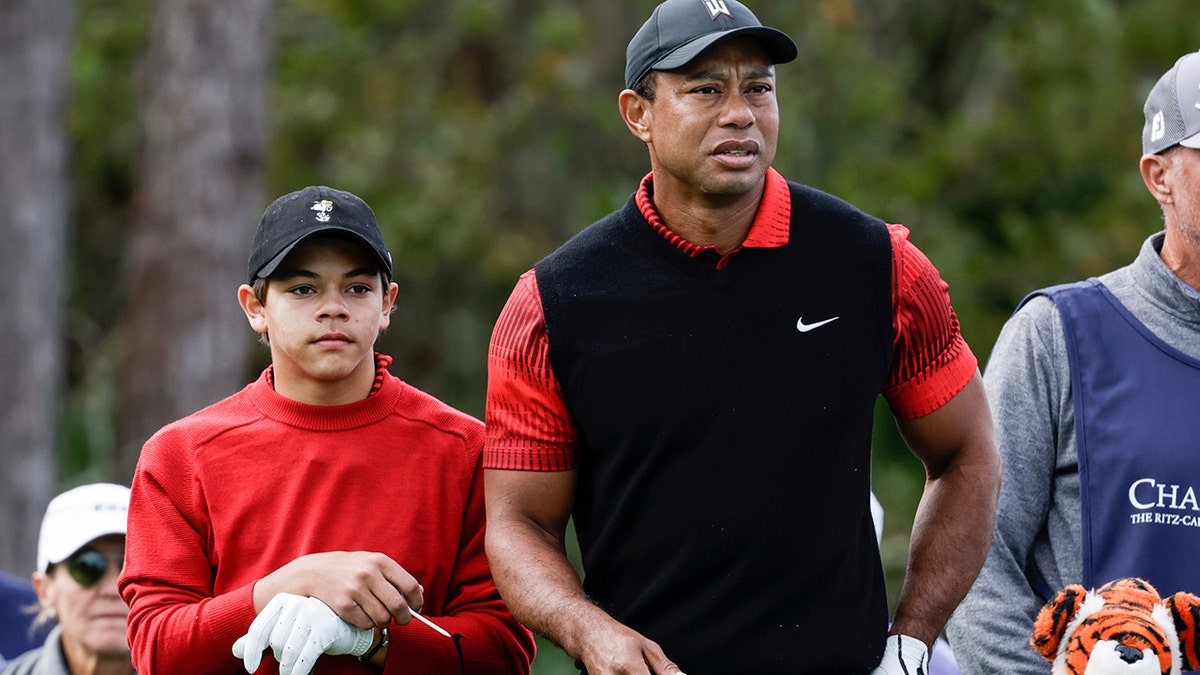
Tiger Woods, right, and his son Charlie Woods, left, prepare to tee off on the 3rd hole during the final round of the PNC Championship golf tournament Sunday, Dec. 18, 2022, in Orlando, Fla. (AP Photo/Kevin Kolczynski)
After the U.S. Open, Woods, who turns 50 in December, admitted it “may or may not” have been his last one. His latest injury raises more questions about his future.
Follow Fox News Digital’s sports coverage on X, and subscribe to the Fox News Sports Huddle newsletter.
Sports
UCLA proves it’s no one-hit wonder with rout of Michigan State

EAST LANSING, Mich. — The sheet of paper greeted every UCLA player as he stepped into his row and took his seat on the team plane.
On it, in large block letters, was printed six words and a challenge from their interim coach: “ARE YOU A ONE-HIT WONDER?”
A week after upsetting Penn State, the Bruins answered emphatically.
Hell, no!
These guys had another triumph in them. A big one.
In an encore that was every bit the success of its smash debut under a makeshift coaching staff, UCLA continued its stunning transformation from winless team to … Big Ten powerhouse? College Football Playoff contender? Sports comeback story of the year?
There seems no limit to what this team might be able to accomplish given the continued rise on display Saturday during a 38-13 victory over Michigan State at Spartan Stadium.
UCLA running back Jalen Berger celebrates with teammates after scoring a touchdown against Michigan State.
(Raj Mehta / Getty Images)
UCLA’s offense, led by playcaller Jerry Neuheisel, rolled off 38 consecutive points after the Bruins (2-4 overall, 2-1 Big Ten) spotted the Spartans (3-3, 0-3) an early touchdown.
The Bruins’ defense, run by de facto defensive coordinator Kevin Coyle, forced a fumble, stopped the Spartans on all four fourth-down attempts and held them to 253 yards of offense. Michigan State quarterback Aidan Chiles was knocked out of the game early in the third quarter after spinning into a vicious hit from defensive tackle Keanu Williams.
Orchestrating it all was interim coach Tim Skipper, who has his team playing with a focus and vitality that were clearly missing under DeShaun Foster. The sheet of paper left on players’ seats was just one of the motivational messages he’s used to revive a once lifeless team.
“It was just a little reminder, that’s all it really was,” Skipper said. “It’s kind of like Santa Claus — you don’t know how the presents got there, but they got there.”
Skipper could now be considered a more attractive candidate for UCLA’s coaching vacancy than Michigan State’s Jonathan Smith, the Pasadena native whose name has appeared on many preliminary lists for the job. How is this the same team that started the season 0-4?
“In my mind,” Skipper said, “I’ve kind of blocked out everything until I’ve been sitting in this seat and I just see us getting better every single day, that’s my whole entire goal, just get better every single day, and that’s all I’m really worried about.”
Things were going so well for the Bruins that UCLA athletic director Martin Jarmond came over to where a Times reporter was sitting in the press box late in the third quarter to discuss the changes he had made in the coaching staff that helped spark the team’s turnaround.
There’s no debating that this is a different team than the one that couldn’t win a game under Foster. UCLA quarterback Nico Iamaleava said players had rediscovered their joy.

“I think just getting back to childhood memories and when we used to play this, when we was younger, and just going out there and having fun with it,” Iamaleava said after passing for 180 yards and three touchdowns. “We were uptight the first four games, and I feel like we went out there and let our hair flow and we were playing for fun.”
Once struggling to reach double digits in points, UCLA’s offense is now humming. A new star emerged Saturday when running back Jalen Berger scored three touchdowns and ran for a season-high 89 yards against his former team, one score coming on a run and the other two on catches.
On a rare day in which he did not need to spark UCLA’s offense with his legs because his team rolled up 238 rushing yards, Iamaleava was nearly flawless with his arm. He completed 16 of 24 passes without an interception while running just six times for three yards.
The Bruins’ 24-7 halftime lead meant they had scored more points in a game and a half with Neuheisel calling plays (66) than they did in their previous four games combined (57).
“The plays coach Jerry has been putting us in have been great, just putting us in great positions to go out there and be successful,” Iamaleava said. “And then everything’s clicking right now. O-line is doing a great job getting our run game open. And then the receivers are doing a great job getting open on the field.”

UCLA quarterback Nico Iamaleava celebrates with wide receiver Kwazi Gilmer during the first half Saturday against Michigan State.
(Raj Mehta / Getty Images)
Their attacking, disciplined defense forced another turnover and stifled Michigan State after allowing the Spartans to score a touchdown on their opening drive.
UCLA’s special teams chipped in as well, in a scene that seemed familiar to those who had watched the Bruins play Northwestern but somehow caught Michigan State by surprise. With the Bruins lined up to punt early in the second quarter, Cole Martin took the snap and ran for 20 yards and a first down. The play was nearly identical to his fake punt against the Wildcats two weeks earlier.
“Very similar,” Skipper said, “but it went the opposite way — same formation, different direction.”
UCLA converted the trickery into points after Iamaleava connected with Berger for a three-yard touchdown catch.
After Bruins edge rusher Devin Aupiu forced a fumble from Chiles that defensive tackle Siale Taupaki recovered, the Bruins got the ball back at the Spartans’ 32-yard line. Iamaleava later found wide receiver Titus Mokiao-Atimalala cutting across the end zone for a 12-yard touchdown that extended UCLA’s lead to 24-7.
Every bounce went the Bruins’ way except for a Mateen Bhaghani field-goal attempt that ricocheted off the left upright late in the second quarter.
UCLA’s 24 consecutive points made its halftime advantage seem far greater, prompting Michigan State fans to serenade their team with boos heading into the locker room on what was shaping up as a not-so-festive homecoming.
“Best part really is just the togetherness we have in the locker room,” Martin said. “We came together. We’ve never altered. We’ve always stayed together. Nobody’s quit on one another. And that was really the best part for me, just knowing that whatever we go through, we’re going to have each other at the end of the day.”
A week after they shocked the college football world, the big story was the Bruins. Once more.
-
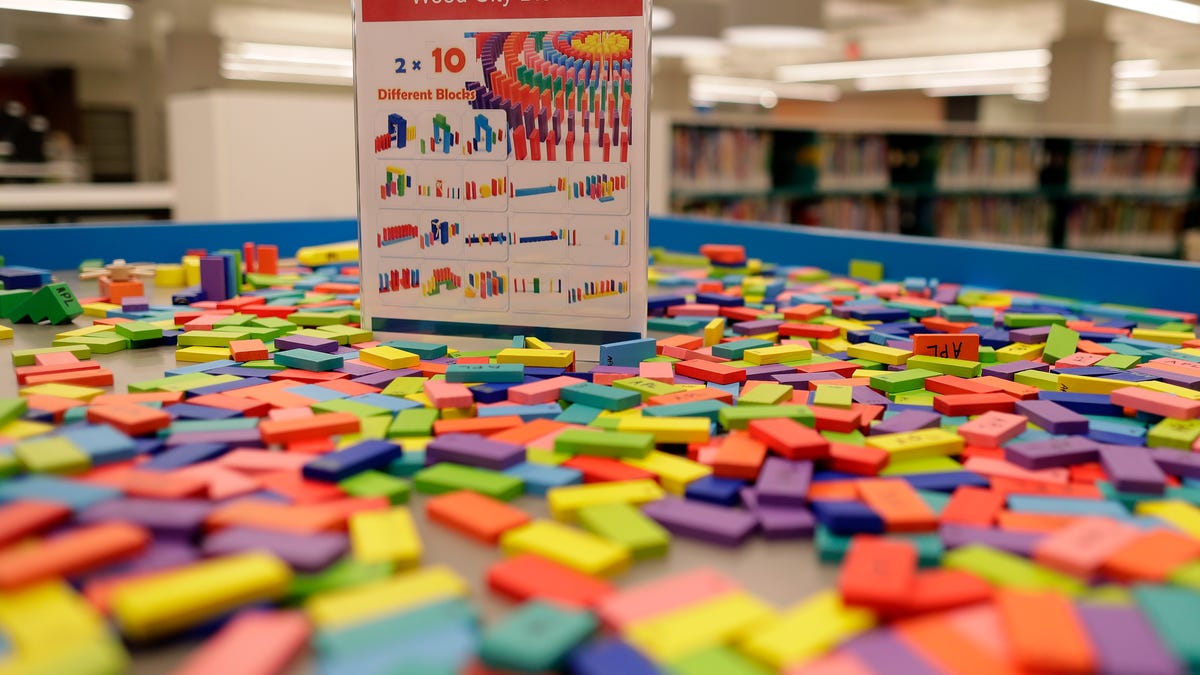
 Wisconsin3 days ago
Wisconsin3 days agoAppleton Public Library wins 2025 Wisconsin Library of the Year award for distinguished service
-

 Vermont3 days ago
Vermont3 days agoFeds: Springfield dealer ran his drug business from Vermont jail
-
Virginia3 days ago
Match 13 Preview: #8 Virginia
-
Business2 days ago
Los Angeles Times Media Group takes step to go public
-

 West Virginia4 days ago
West Virginia4 days agoWest Virginia eatery among Yelp’s “outrageous outdoor dining spots”
-
Utah3 days ago
Bookmark this link for The Southern Utah Tribune e-edition
-
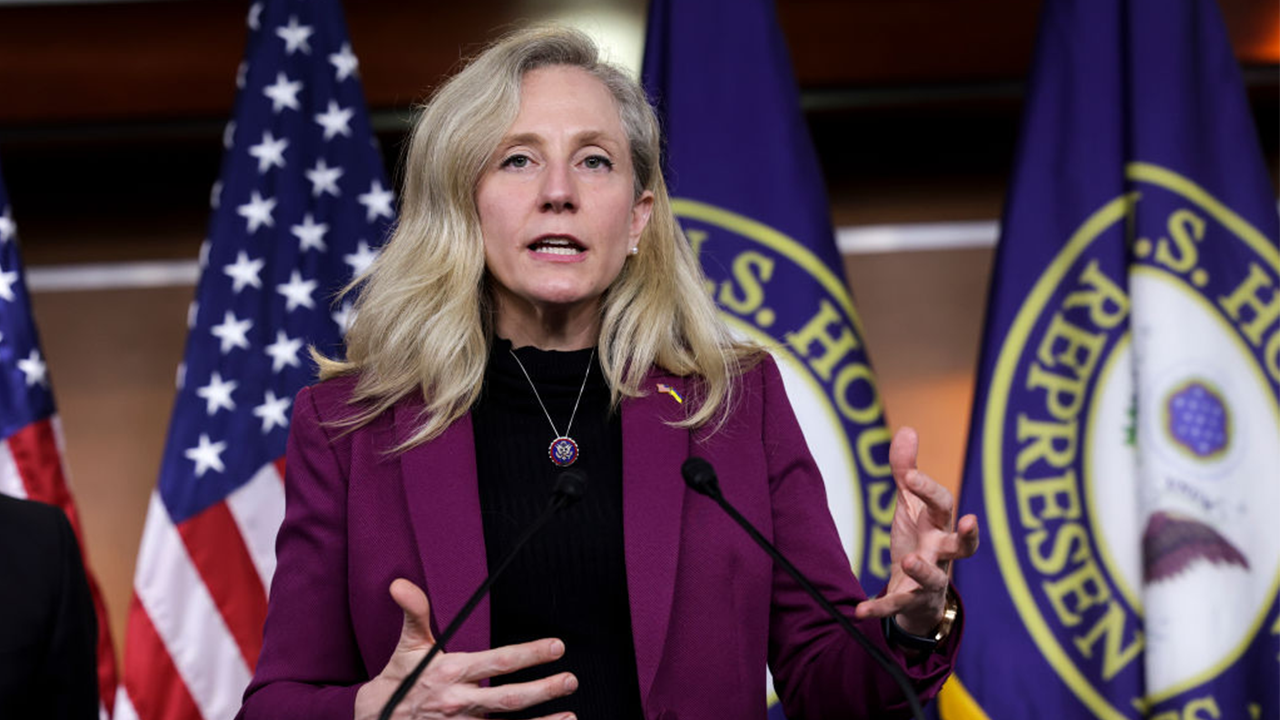
 Politics2 days ago
Politics2 days agoSpanberger refuses to urge Jay Jones to exit race, dodges questions after ‘two bullets’ texts
-

 Midwest3 days ago
Midwest3 days agoWisconsin ski park faces lawsuit after allegedly firing employee for sharing Bible verses on social media
